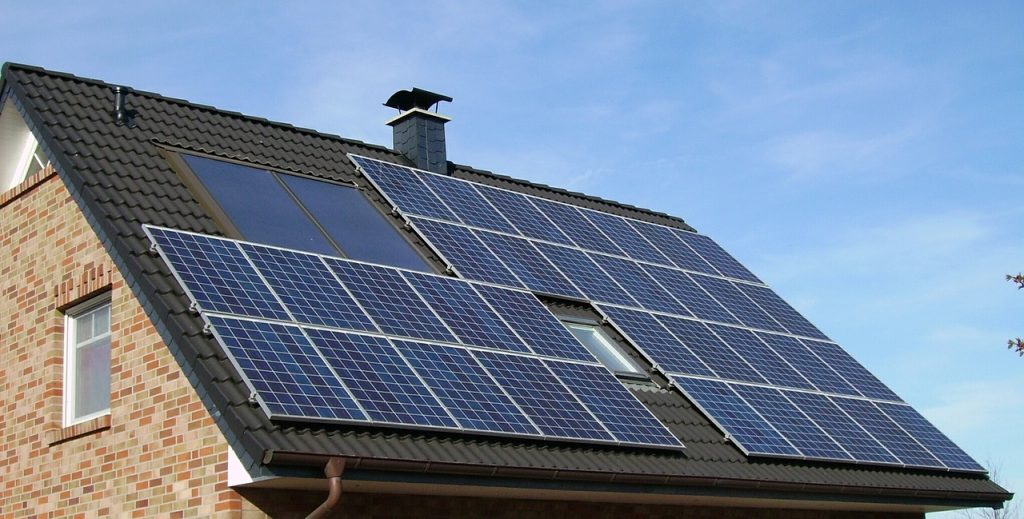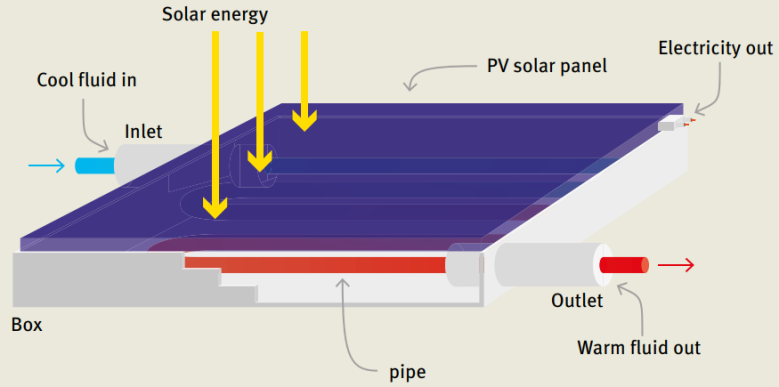The solar sector is experiencing by far the highest global growth and new investment in renewable technologies. Solar energy is the world’s most abundant permanent energy source: one hour of solar radiation is equivalent to more than the world’s total annual energy need. It is projected that solar energy will cover one-third of the world’s energy consumption by 2060 under favourable conditions. Solar energy can be converted into other energy forms that are useful in sustaining society; in particular, it can be converted to electricity by solar photovoltaic (PV) systems or into thermal energy by solar-thermal (ST) systems.
Christos Markides, Professor of Clean Energy Technologies at the Department of Chemical Engineering, Imperial College London and Head of the Clean Energy Processes (CEP) Laboratory, recently won the Institution of Chemical Engineers (IChemE) Global Award for Best Research Project for the lab’s work developing a promising emerging hybrid PV-T solar-energy technology, which synergistically integrates PV and ST technologies, and is capable of delivering both electricity and heat.
The CEP Laboratory has been active in researching hybrid solar-energy systems by considering solutions for improving the performance and reducing the costs of such technologies, as well as developing advanced thermodynamic, economic and environmental models to assess their potential for use in a variety of applications. In this article he explains how the technology works, and presents the state-of-the-art and future research that is ongoing in the CEP Laboratory and beyond, aimed at advancing this technology.
PV panels are the best-known technology for generating renewable electricity based on the conversion of sunlight into electricity by a variety of semiconductor materials. In this conversion process, only about 15% of the absorbed sunlight is converted to useful electricity, while the rest is partially stored as heat and ultimately lost to the environment. The accumulated heat causes the temperature of the panels to rise, with temperatures reaching up to 60-80°C on hot days, leading to a decrease in their efficiency and overall lifetime.

In contrast to PV systems where heat is an unfavourable by-product, ST systems aim to deliver useful heat by effectively absorbing solar energy at a much higher efficiency and transferring this to a stream of air, water or another fluid. You may have used a traditional immersion heater, where water is heated and stored until it’s needed, perhaps for a shower or for washing up. ST systems work similarly, except the water is heated by solar energy.
ST heating has the potential to make a significant impact in transforming the renewable energy landscape, given that half of the global energy demand is used for heating purposes: hot water for cooking and washing, central heating, and industrial and manufacturing processes. Harnessing a renewable source of primary energy to provide this heat, reduces the consumption of fossil fuels, reduces emissions and the impact on the environment.
Hybrid PV-T systems combine PV and ST technologies, allowing for electrical and thermal outputs to be obtained simultaneously from the same installed area, and reducing the losses in the electrical efficiency of solar panels caused by excessive operating temperatures.
This is achieved by using a cooling flow of either air or water through or over the PV module, which can lower the temperature of the equipment whilst producing a hot stream of air of water as a thermal output that can be used for hot-water provision, space heating or cooling. Hybrid PV-T technology provides a particularly promising energy solution when roof space is limited, at a premium or when heat and electricity are required at the same time.

Results from both experimental tests and models developed by the CEP Laboratory suggest that with an appropriate installation area and operation strategy, hybrid PV-T systems are capable of significantly reducing fossil-fuel consumption for power, heating and/or cooling provision in residential or commercial buildings. The decarbonisation potential of hybrid systems exceeds that of singular systems, either in use on their own or side-by-side, and the cost of energy is competitive or even lower than stand-alone systems in optimal conditions.
In recent work funded by EPSRC, the CEP group has proposed a roadmap for next-generation PV-T technology capable of delivering electricity more efficiently while simultaneously providing higher-grade heat, broadening the applications for this sustainable, low-carbon technology. CEP researchers have identified systematic strategies for reducing the thermal and electrical losses that can lead to hybrid systems with a 70% improvement in thermal efficiency and a 20% improvement in carbon savings and financial payback compared to present commercial collectors.
Led by CEP group member Dr Kai Wang, the team is now developing novel PV-T collector designs based on an innovative principle in which the solar spectrum is split into separate portions, one that is well-suited to conversion into electricity and that is directed directly to the PV cells, and a second that is absorbed as thermal energy. This decoupling of the thermal and electrical elements of the collector reduces the PV cell temperatures and allows higher electrical conversion efficiencies, while at the same time supplying a thermal output at temperatures considerably higher than the PV operation temperature. Novel materials and fluids are being developed and tested to identify optimal designs.
The group believes that innovations such as these can unlock the potential of PV-T technology by allowing step-changes in performance and cost competitiveness, and promoting but also enabling further application possibilities. A recent Imperial College spin-out company, Solar Flow Limited, has been founded to further develop and commercialise the technology – for further information, please contact: c.markides@imperial.ac.uk.
References:
- Roadmap for the next-generation of hybrid photovoltaic-thermal solar energy collectors in Solar Energy (https://doi.org/10.1016/j.solener.2018.09.004).
- Solar-Thermal and Hybrid Photovoltaic-Thermal Systems for Renewable Heating in Grantham Institute Briefing Paper Publications (https://www.imperial.ac.uk/media/imperial-college/grantham-institute/public/publications/briefing-papers/2679_Briefing-P-22-Solar-heat_web.pdf).
- Technoeconomic modelling and optimisation of solar combined heat and power systems based on flat-box PVT collectors for domestic applications in Energy Conversion and Management (https://doi.org/10.1016/j.enconman.2018.07.045).
- Thermoeconomic assessment of a PV/T combined heating and power system for University Sport Centre of Bari in Energy Procedia (https://www.researchgate.net/publication/327285663_Thermoeconomic_assessment_of_a_PVT_combined_heating_and_power_system_for_University_Sport_Centre_of_Bari).
- Thermodynamic and Economic Assessments of a Hybrid PVT-ORC Combined Heating and Power System for Swimming Pools in Heat Powered Cycles Conference Proceedings 2018 (https://www.researchgate.net/publication/327285587_Thermodynamic_and_Economic_Assessments_of_a_Hybrid_PVT-ORC_Combined_Heating_and_Power_System_for_Swimming_Pools).
- Hybrid photovoltaic-thermal solar systems for combined heating, cooling and power provision in the urban environment in Energy Conversion and Management (https://doi.org/10.1016/j.enconman.2017.03.024).
- A UK-based assessment of hybrid PV and solar-thermal systems for domestic heating and power: System performance in Applied Energy (https://doi.org/10.1016/j.apenergy.2014.01.061).
- Hybrid PV and solar-thermal systems for domestic heat and power provision in the UK: Techno-economic considerations in Applied Energy (https://doi.org/10.1016/j.apenergy.2015.09.025).
- Dynamic coupled thermal-and-electrical modelling of sheet-and-tube hybrid photovoltaic/thermal (PVT) collectors in Applied Thermal Engineering (https://doi.org/10.1016/j.applthermaleng.2016.02.056).